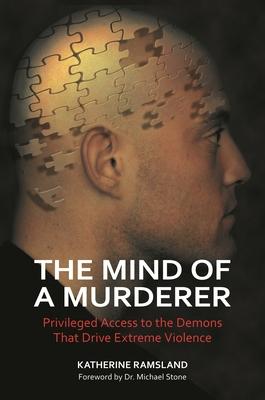This unique history of the last 100 years of criminal psychology shares insights about infamous murderers from the psychiatrists and other trained psychological professionals who analyzed and treated them.
The Mind of a Murderer: Privileged Access to the Demons That Drive Extreme Violence presents a series of cases in which a psychiatrist, psychologist, or counselor gained privileged access to a mass or serial murderer, going beyond the typical mental assessment to learn more about criminal behavior. Through their work, readers are granted a unique view of criminology and a better understanding of the criminal mind. The book opens with the earliest professional observations of criminals in the late 19th century and goes on to explore the rudimentary behavioral profiling and case analysis of the early 20th century. It shows how, by the 1960s and 1970s, behavioral professionals recognized the need for intense study of extreme offenders and got close to the likes of Richard Speck, John Wayne Gacy, and Ted Bundy to gain a fuller picture of their psychological development. Finally, readers learn how today's behavioral professionals rely on neurobiological correlates to assess predatory, impulsive, and addictive behavior.
Book
The Mind of a Murderer: Privileged Access to the Demons that Drive Extreme Violence
(Write a Review)
Hardcover
$61.11
This unique history of the last 100 years of criminal psychology shares insights about infamous murderers from the psychiatrists and other trained psychological professionals who analyzed and treated them.
The Mind of a Murderer: Privileged Access to the Demons That Drive Extreme Violence presents a series of cases in which a psychiatrist, psychologist, or counselor gained privileged access to a mass or serial murderer, going beyond the typical mental assessment to learn more about criminal behavior. Through their work, readers are granted a unique view of criminology and a better understanding of the criminal mind. The book opens with the earliest professional observations of criminals in the late 19th century and goes on to explore the rudimentary behavioral profiling and case analysis of the early 20th century. It shows how, by the 1960s and 1970s, behavioral professionals recognized the need for intense study of extreme offenders and got close to the likes of Richard Speck, John Wayne Gacy, and Ted Bundy to gain a fuller picture of their psychological development. Finally, readers learn how today's behavioral professionals rely on neurobiological correlates to assess predatory, impulsive, and addictive behavior.Hardcover
$61.11